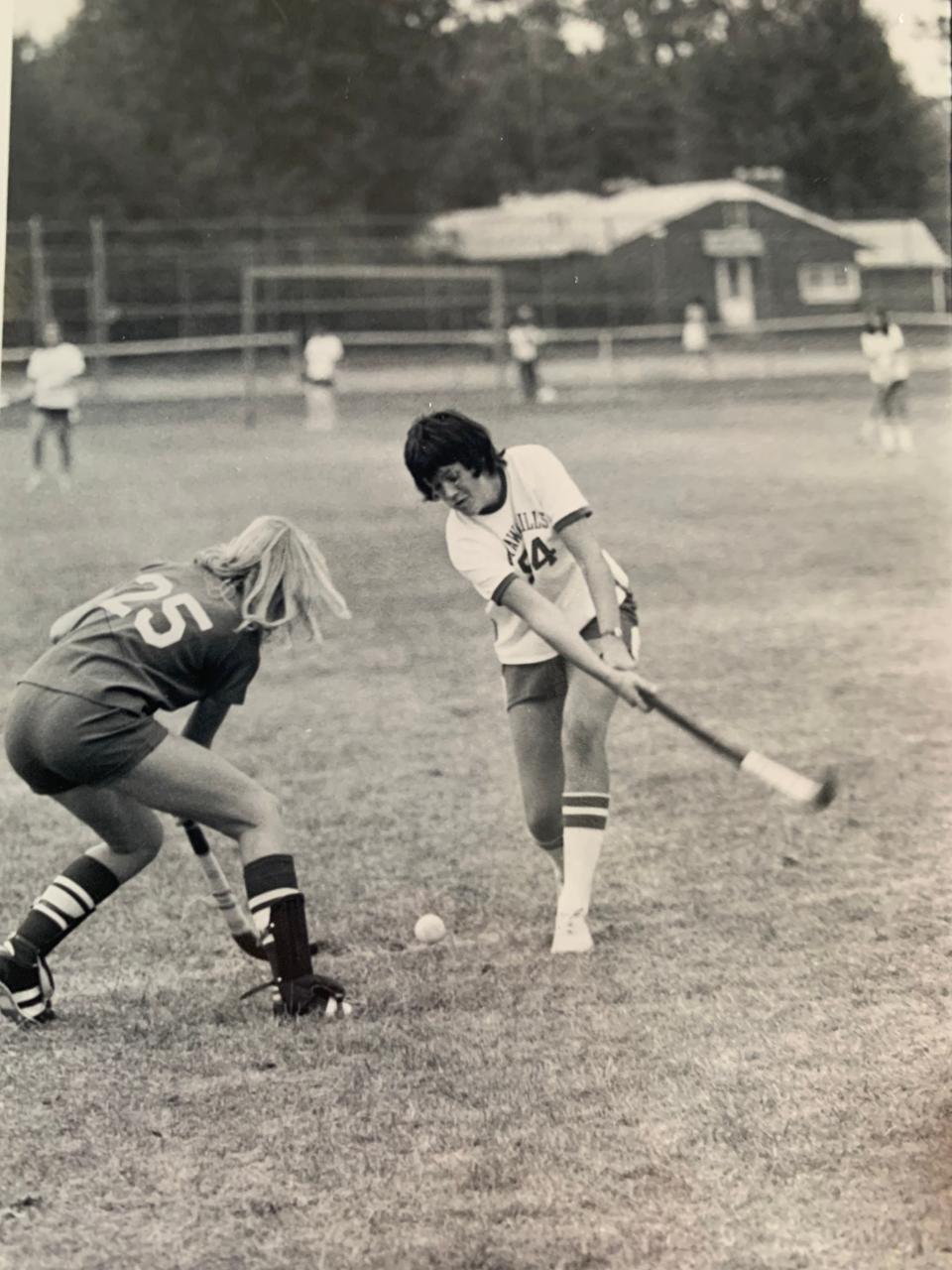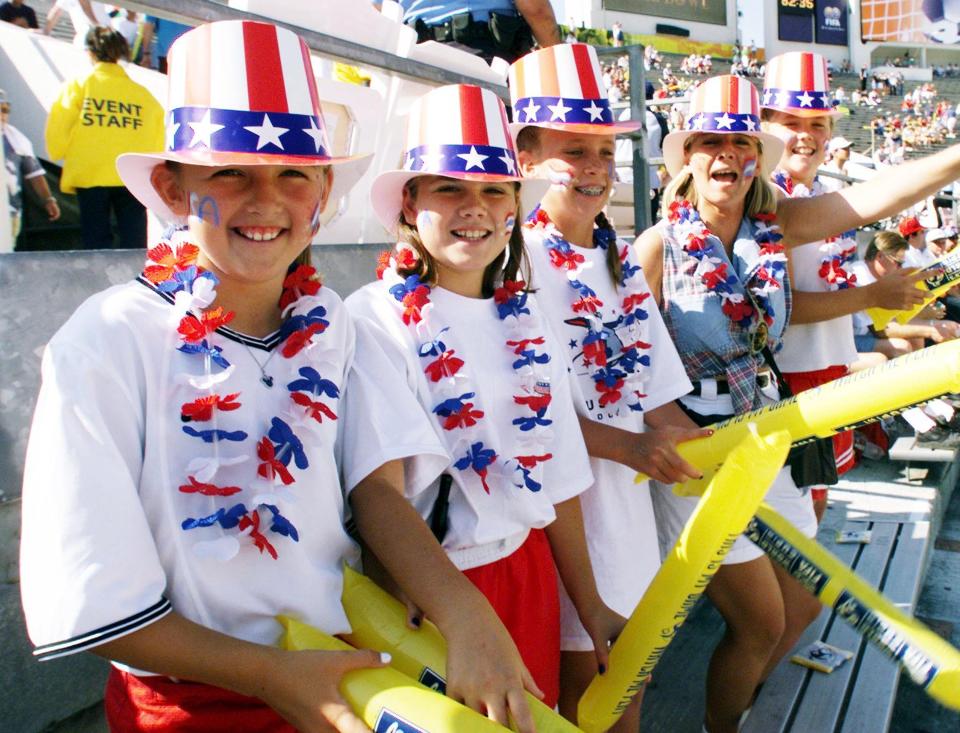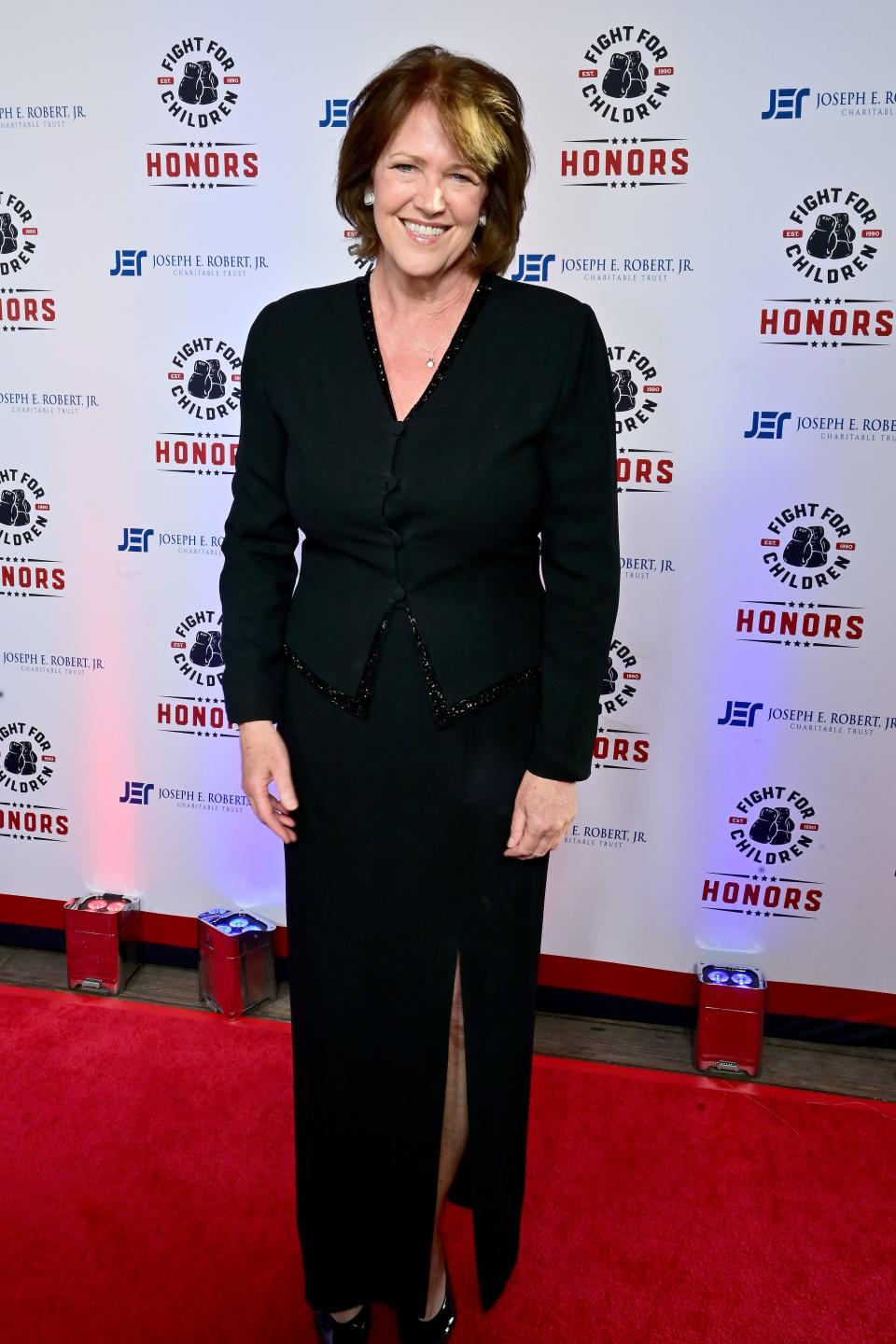Here's how I've benefited from Title IX's growing influence over the past 50 years
Title IX and I go back a long way. We’re old friends, actually.
Back on June 23, 1972, I was 14 and just a couple of months away from entering high school and playing on my first organized sports team when President Richard Nixon signed the law that slowly but surely opened the floodgates for girls and women to play sports as boys and men had for generations in America.
From that moment on, at every twist and turn in my life, Title IX has been by my side. The law started as barely a whisper, ignored by many but not by me as I became a six-sport athlete in high school. I played so many sports not because I was that talented athletically, but because I wanted to make up for what I missed as a younger girl when the boys went off to Little League and, suddenly alone, I threw a ball against a wall and played catch with myself until my parents signed me up for tennis.
TITLE IX 50 YEARS LATER: A seed that has sprung into 'amazing forest'

Most girls weren’t playing sports back then because their parents didn’t allow it or the girls didn’t think they liked sports. Me? I loved them and was encouraged every day by my mom and dad to play anything and everything.
Title IX was barely a year old when it received a tremendous jolt. On Sept. 20, 1973, tennis star Billie Jean King easily defeated aging self-declared male chauvinist Bobby Riggs, 6-4, 6-3, 6-3. Our whole family watched, cheering her on. Everyone’s family watched. It was a massive national prime-time event. Not only was that the first time I had ever seen a woman beat a man at anything, it was the first time I had ever seen a woman join a man as an equal on any cultural stage.
Soon, Title IX was starting to play with long-held American traditions and beliefs. Fathers like my dad – who himself was way ahead of his time in introducing me to sports – increasingly wanted their daughters to taste the kind of sports experience in school that they'd had as a kid. So some spoke up, at least a little, to support their daughters in boosters clubs and at school board meetings. Soon, girl athletes were not wearing tennis shoes to play basketball, as I had. Girl athletes were no longer always getting the worst game times, as my teams had. Girl athletes weren’t always having to vacate their locker room when a visiting boys team came to play our boys, as we had.
Into the 1980s and 1990s we went, with tens of thousands of girls and women participating in sports, earning scholarships, winning NCAA titles, dominating the Olympic Games.
But the magic of Title IX was about more than playing. Sports as a lifestyle, as a mindset and as a career were now opening up for the other 50% of our population. Women could do things they had never done before – say, become sportswriters.
At first my fellow trailblazing peers and I were curiosities. Every TV station wanted to come interview me when I started as the first woman sportswriter at The Miami Herald, then the first woman to cover the Washington football team at The Washington Post. Soon, the employment of women in sports media was no longer news. There were hundreds of us and now, well over a thousand, so many that I can’t even begin to name them all. Who gives a second thought now when women show up anchoring broadcasts on ESPN or on your local sportscast?
A tsunami was building, a Title Wave, if you will. It rolled through the 1996 Atlanta Olympic Games, where for the first time at an Olympics, almost all of the stories I covered were about women. “These days,” 6-foot-tall gold-medal-winning U.S. swimmer Amy Van Dyken told me, “it’s cool for a woman to be able to bench press her husband.”

On to 1999 we went, where a story that would have been utterly unimaginable in 1972 awaited. A minivan revolution was unfolding across the nation: Moms, dads and their daughters filling the great football stadiums of America to watch women’s soccer. Millions of girls like me, with supportive parents like mine, now not only welcomed but encouraged to love and play sports. The United States fell in love with tall, strong, muscular women – women like me – in baggy uniforms and tall socks that summer. Title IX was 27 years old. The nation was going nuts over what it had created.
I stood in the Rose Bowl press box on July 10, 1999, a date I never have to look up, looking out at a sun-splashed crowd of 90,185, and shook my head. Was this really happening? A dozen or so other sports journalists who also had been athletes as girls stood beside me. They were as joyous as I was.
The United States won the women’s World Cup that day; a few days later, the players appeared on the cover of Time, Newsweek, Sports Illustrated and People magazines in the same week. No story on earth has ever achieved that, before or since. It was that big.
The nation’s acceptance and love for Title IX took off from that moment. If a girl wasn’t playing sports, someone was now sure to ask: Why not?
A quick thought: As you drive through your neighborhood these days, or any neighborhood in the nation, and see a field full of girls or women playing soccer or lacrosse or field hockey or softball, do you look again? Are you surprised?
Of course not. Now travel back in time to 1972, and look at that same field. If a girl – even one girl – was on a playing field in America 50 years ago (other than a girl like me), it was likely she was there to tell her brother it was time to come home for dinner.
I have told my story of growing up with Title IX many times, in interviews and speeches and books, and people sometimes react by saying how sad they are that I didn’t have what female athletes have now. I stop them before they can utter another sentence. No. It’s fine. It’s more than fine, actually.
Back then, we didn’t know what we didn’t have. I could never have imagined what 2022 would look like, that hundreds of women athletes would be famous millionaires, some many times over; that the U.S. women’s national soccer team would be paid equally to the men’s team; that U.S. women would be the stars and heroes of every Olympic Games; that hundreds of thousands of women would earn college scholarships and degrees and go on to run for office and lead companies and universities and become Hall of Fame coaches and anything else they wanted to be.
Back when I was in school, I loved what I had. To play any sport at all, to wear a uniform, even if it was just one green and white jersey that my mom had to wash multiple times a week, was such a delight. I was thrilled that I could play six sports in high school: tennis and field hockey in the fall, basketball and volleyball in the winter, softball and track and field in the spring. I kept all my statistics and put them in a scrapbook, which I have to this day. I wrote recaps of every game in my diaries and journals, which I also still have. There was no coverage of any of our games in the local newspaper like the boys, but that was OK. I didn’t expect any. Almost no one came to watch, except for a few parents, including my mom and dad, always, but that was OK too. I got a chance to play, and I cherished it. That was enough for me.
What would be awful is if everything had stayed the same, if 2022 looked like 1972. Thankfully, that’s so far from the case that it is almost laughable to even mention it. One of the greatest cultural success stories in American history has been written over these past 50 years.

Every family can tell this story their own way about a daughter, granddaughter, sister, niece. My family can, too. The best athlete in our family didn’t have to wait to play on a team until freshman year of high school as I did. She was on her first team at age 5, played multiple sports throughout her childhood, starred in volleyball throughout high school and will be playing in college.
How many organized teams was she on before her freshman year of high school? Twenty-seven.
In my entire life of playing sports, I rode on one team bus, in my senior year of high school, when Ohio held its inaugural girls state high school basketball tournament. Otherwise, mothers and fellow students drove us to all our various games. One time, we didn’t have enough drivers so we had to postpone a varsity softball game.
I asked our volleyball player to figure out how many team buses she has taken in her sports career so far. We lost count at 50.
Oh, and there have been 15 plane rides to volleyball tournaments around the country as well.
Title IX is not perfect. There are still problems, to be sure. My USA TODAY colleagues have recently brought startling inequities to light, especially on college campuses.
But the success? My goodness. Little by little, now by leaps and bounds, opportunity has grown, acceptance has grown, participation has grown. It had nowhere to go but up, and up it went.
This I know: Today is the greatest day to be a girl or woman in sports – until tomorrow. That has been true every single day in this country for the past 50 years. I know that because I’ve witnessed it. I’ve benefited from it. I’ve lived it. And it’s all because of Title IX, the best of old friends.
This article originally appeared on USA TODAY: Title IX: How Christine Brennan benefited as athlete, journalist

 Yahoo Movies
Yahoo Movies 
